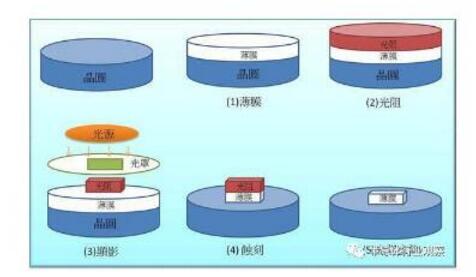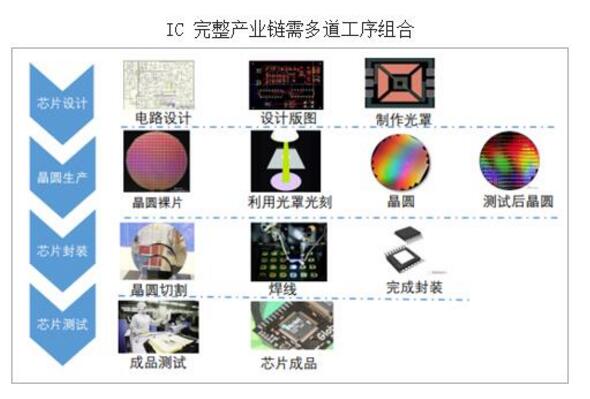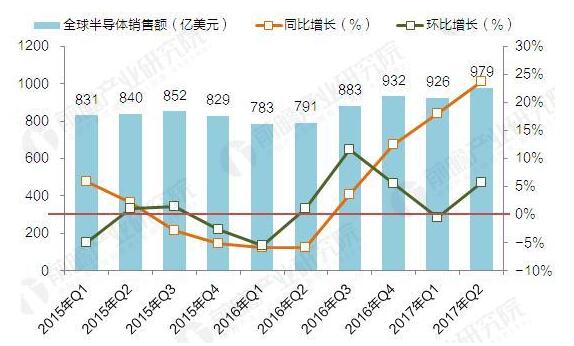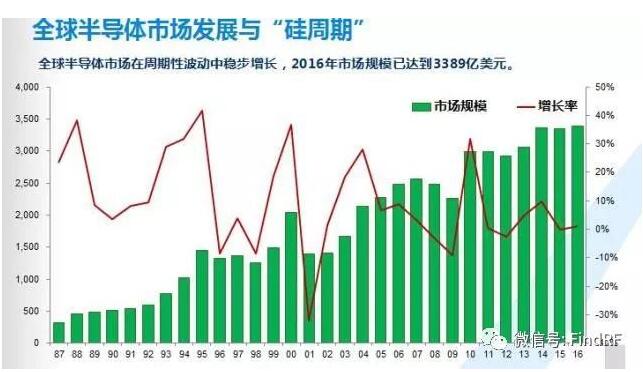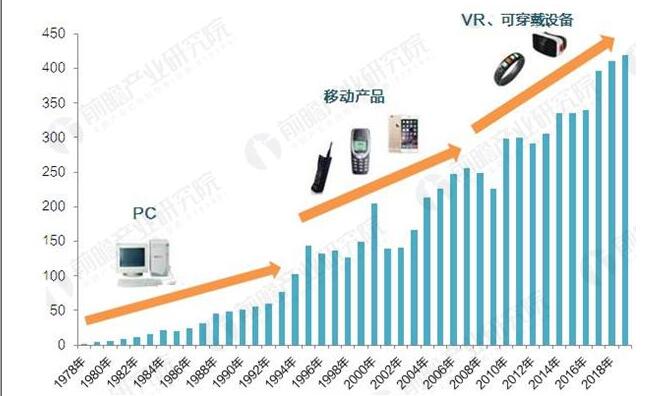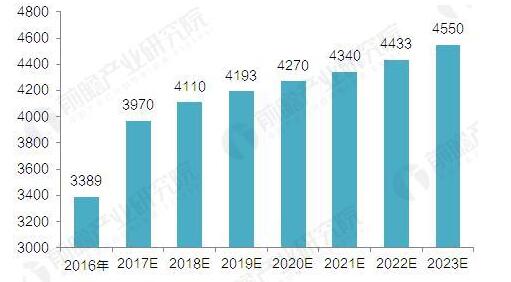This article first introduced what industry the semiconductor belongs to and what semiconductors do. Secondly, it introduced the semiconductor industry companies. Finally, it elaborated the development prospects of semiconductors, and introduced them in detail from the three aspects of sales, development status and global semiconductor prospect forecast from 2018 to 2023. . The semiconductor industry belongs to the electronic information industry and belongs to the hardware industry. It is an industry developed on the basis of semiconductors and the foundation of the information age. What to do: The upper reaches of the semiconductor industry are IC design companies and silicon wafer manufacturing companies. IC design companies design circuit diagrams according to customer needs. Silicon wafer manufacturing companies use silicon wafers as raw materials to manufacture silicon wafers. The main task of the IC manufacturing company in the middle reaches is to transplant the circuit diagram designed by the IC design company to the wafers manufactured by the silicon wafer manufacturing company. The finished wafers are sent to downstream IC packaging and testing plants for packaging and testing. 1, silicon wafer manufacturing The top of the semiconductor industry is silicon wafer fabrication. In fact, the upstream silicon wafer industry is formed by three sub-industries, which are the preliminary purification of silicon → the manufacture of polysilicon → silicon wafer fabrication. 2, IC design As mentioned earlier, silicon wafers are manufactured, quartz sand is used, and silicon wafers are produced. The investment in IC design is the superior brain power (and liver) of “good peopleâ€. The output is a circuit diagram. Finally, the mask is sent to the IC manufacturing company and the merits are completed! 3, IC manufacturing: transfer the photomask on the mask to the wafer The manufacturing process of ICs is relatively complex, and the process is similar to the manufacturing process of traditional photographs. The main steps include: thin film → photolithography → development → etching → photoresist removal. Thin film preparation: Several layers of films with different materials and different thicknesses are grown on the surface of the wafer; photolithography: the patterns on the mask are copied onto the silicon wafer. The cost of lithography is about 1/3 of the entire wafer manufacturing process, which takes up about 40 to 60% of the entire wafer process; 4, IC packaging and testing: packaging and testing The packaging process is roughly as follows: cutting → sticking → cutting and welding → mold sealing. Cutting: Cutting wafers produced by IC manufacturing companies into rectangular ICs; pasting: attaching ICs to PCBs; welding: soldering pins of ICs to PCBs to make them compatible with PCBs; molding: Pins sealed up; Semiconductor Industry Company Inventory 1. Intel Corporation 2. Samsung Electronics Co., Ltd. 3. Texas Instruments Corporation Toshiba (Toshiba) 5. Taiwan Semiconductor Manufacturing Company (TSMC) 1. Global Semiconductor Sales in 2017 The downstream demand for semiconductors has driven the growth of the semiconductor market with macroeconomic fluctuations, macroeconomic boom, industrial manufacturing and consumer spending growth. The data shows that the global GDP growth rate is closely related to the growth rate of the semiconductor market. According to the World Semiconductor Trade Statistics Organization (WSTS) data disclosure, the global semiconductor industry exceeded 100 billion U.S. dollars in 1994, exceeded 200 billion U.S. dollars in 2000, reached nearly 300 billion U.S. dollars in 2010, reached 336.3 billion U.S. dollars in 2015, and the global semiconductor industry has grown enormously. Industry scale. Among them, compound growth rate reached 17% from 1976 to 2000, and the growth rate began to slow down after 2000, and the compound growth rate was 9% from 2001 to 2008. In recent years, the semiconductor industry has gradually entered a period of stable and mature development. It is expected that the compound growth rate for the period of 2010-2017 will be 2.37%. In 2016, despite the challenging macro economy, the global semiconductor industry still exceeded its expectations. According to the prospective industry research institute "China Semiconductor Discrete Device Manufacturing Industry Development Prospects and Investment Forecast Analysis Report," data show that in 2016 the global semiconductor industry sales were 338.931 billion US dollars, setting the highest annual revenue record ever, compared to 2015 micro The increase was 1.1%, of which the largest increase was in the Chinese mainland market, with 9.2% leading other markets. In the first half of 2017, the global semiconductor market was 190.5 billion U.S. dollars, a year-on-year increase of 21.00%. It was the fastest growing and largest semi-annual market share since 2010; of which, the global semiconductor market in the second quarter was approximately 97.9 billion U.S. dollars. The quarterly growth rate was 5.7%, which was a year-on-year increase of 23.0% compared to the second quarter of 2016. Exhibit 1: Quarterly Revenue and Growth of the Global Semiconductor Industry, 2015-2017 (Unit: Billion US Dollars, %) Source: Forward-looking Industry Research Institute, “Semiconductor Discrete Device Manufacturing Industry Analysis Report†2. Development of the semiconductor industry The global semiconductor market has steadily grown in cyclical fluctuations. In 2016, the market scale has reached US$338.9 billion. The United States, Japan, Europe and the Asia-Pacific region are the main distribution regions of the global semiconductor market. Among them, the Asia-Pacific market with China as its core has become the market center, occupying 60% of the market share, the United States accounting for 20%, and Europe and Japan each accounting for 10%. However, the regional market growth in 2016 was very different. The U.S. and European markets plunged by about 4.5%, and Asia Pacific and Japan increased by about 4%. The semiconductor market is divided into integrated circuits, optoelectronic devices, sensors, and discrete components. ICs are the most important products in the global semiconductor market, occupying more than 80% of the market share, with 10% of sensors, half of discrete devices, and about 3 to 4% of optoelectronic devices; at the same time, optoelectronic devices and sensors are becoming the driving force. The hot area where the market continues to grow. In 2016, the four-sensor growth rate reached 22%. In the field of integrated circuits, microprocessors, memories, logic circuits, and analog circuits are the four main types of products that make up the market. Microprocessors and memories together account for about half of the total. Analog chips accounted for 18%, logic chips accounted for 1/3, and analog chips increased by 6% in 2016. From the perspective of market application, the communications industry is still the largest application market, accounting for 40% of the market share, the computer industry accounts for 1/3 of the market, consumer electronics accounts for 10%, automotive electronics, industry and medical each 7%, the government and The military area accounts for about 1%. Automotive electronics has become the next major concern for semiconductor industry companies. The main reason is that automobiles may become the third universal computing platform and Internet portal after computers and smart phones. The development of auto-pilot technology requires a lot of chip support. At present, major semiconductor manufacturers are actively planning. For example, Qualcomm entered the automotive electronics market through the acquisition of NXP Semiconductors; Fairchild has acquired Fairchild to complement its short version on medium and high voltage power devices; Renesas has consolidated its position in the automotive electronics market by acquiring Intersil, etc. . 3, 2018-2023 Global Semiconductor Prospect Forecast After the global semiconductor market peaked in 2014, it reached US$335.5 billion, an increase of 9.8%. However, the following 2015 and 2016 have already been in the flood season for two consecutive years and basically stopped. Although 2017 exceeded market expectations significantly, the year-on-year growth rates in the first and second quarters all returned to double digits, reaching 18.1% and 23.8%, respectively. The 2017 year is expected to exceed 17% growth, but this trend is not sustainable. The cyclical pattern of industry fluctuations is expected to increase slightly after 2019. The reason is that semiconductors are the market for demand promotion. Over the past 40 years, the driving force for the growth of the semiconductor industry has shifted from the traditional PC and related industries to the mobile product market, including smart phones and tablet computers. The future will be wearable. Equipment, VR/AR equipment transfer. Exhibit 7: Semiconductor Industry Development Driven by Demand Source: Forward-looking Industry Research Institute One of the main causes of the current growth in the semiconductor industry is that smartphones have fallen into a downtrend. After the number of smartphones increased by 28% in 2014, they increased by only 7% and 1% in 2015 and 2016, and they are saturated, and the next wave is expected. Pushers such as AR/VR, automotive electronics, and the Internet of Things have not yet reached expectations and are still pregnant. In addition, from a technical perspective, the transition from 14 nm to 10 nm and below in process size, 3D NAND flash memory, and 2.5D, TSV are all technically hard-bones. It is difficult in the process of advancement and is unlikely to be in a short period of time. There will be a big breakthrough within. Therefore, there have been many major mergers and acquisitions in the global semiconductor industry recently, indicating that they are all looking for a way out. They can also think that the semiconductor industry is at a crucial turning point, indicating that a major change is coming. Exhibit 8: Forecast of Global Semiconductor Industry Sales in 2016-2023 (Unit: USD 100 million, %)
So happy to know that 11th laptop is ranking the No.1 position in 2022 custom market. You can see intel core i3 11th generation laptop,Gaming Laptop i5 11th generation, laptop price i7 11th generation, etc. At this store. Maybe you will ask why 11th gen gaming laptop is so popular and welcome, mainly reason is its competitive cost and high performance. Intel i7 11th Generation Laptop cost is similar as intel i7 10th gen laptop, but performance is much better than 10th one. Besides, 12th laptop is arriving in lot at the end of 2022 at custom laptop market, price is will much competitive at that time.
Whom this Gaming Laptop is more suitable to? Of course, heavier tasks workers, no matter office jobs, education tasks, or others. However, if your clients focus more powerful cpu and performance, i7 16gb ram 4gb graphics laptop or 15 Inch Gaming Laptop with 10th cpu and 2GB graphics also alternatives.
You can contact us directly to get get right and valuable information fast. Will try our best to support every clients no matter quantity you take.
11th Laptop,Intel Core I3 11th Generation Laptop,11th Gen Gaming Laptop,Gaming Laptop I5 11th Generation,Laptop Price I7 11th Generation Henan Shuyi Electronics Co., Ltd. , https://www.shuyielectronictech.com